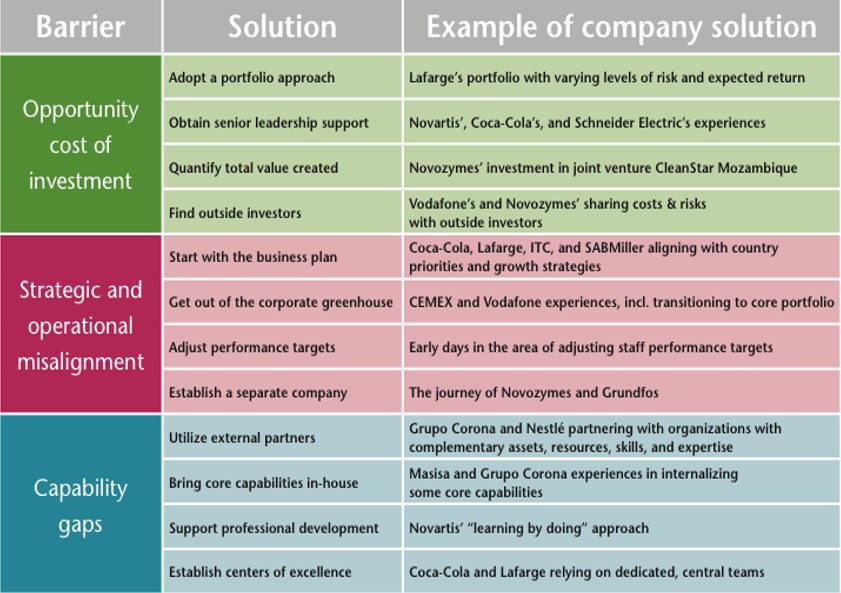Targeting the Base of the Pyramid at Scale : How can large companies overcome internal barriers?
In my interactions with member companies and partners of the World Business Council for Sustainable Development (WBCSD), the word that comes up in almost every conversation is “scale”. It stands for the ambition to bring sustainable business solutions tackling poverty challenges to scale. But it is also oftentimes used to signal difficulties in achieving the full potential of improving livelihoods and companies’ economic bottom line. Thus, the word is often accompanied by references to words such as “barriers”, “roadblocks”, “challenges” – both internal (i.e., within a given business) and/or external (i.e., at the level of external market barriers).
From a business perspective, scale is a combination of reach, geographic footprint, and sales or procurement volume, depending on their industries and the nature of their inclusive business models targeting the base of the pyramid. Scale is also very much related to break-even and return on investment, as only commercially viable ventures will become truly scalable.
Over the past few months, we have worked with member representatives and experts toward dissecting one particular area: the internal barriers faced by large companies when they want to scale up inclusive business ventures. But we did not limit ourselves to highlighting problems; rather, we opted to couple each barrier to a set of proven solutions that leading companies in this space have adopted.
The result is an issue brief titled Scaling up Inclusive Business – Solutions to overcome internal barriers, launched last week at our annual meeting in Istanbul.
The brief organizes the range of possible internal organizational barriers to scale up inclusive business into three main categories: opportunity cost of investment; strategic and operational misalignment; and capability gaps. For each of these three categories of barriers, we describe a range of solutions (a dozen in total) illustrated by company examples – from obtaining the support of senior leadership and establishing centers of excellence, to bringing core capabilities in-house, adjusting performance targets and quantifying the total value created by inclusive business ventures.
It features insights from the following companies: CEMEX, Grundfos, Grupo Corona, ITC, Lafarge, Masisa, Nestlé, Novartis, Novozymes, SABMiller, Schneider Electric, The Coca-Cola Company, and Vodafone.
See the illustration below for a general overview. You can also click through slide show below for a brief overview on our findings, and download the issue brief here.

Filippo Veglio is the Director of the Social Capital Focus Area at the World Business Council for Sustainable Development (WBCSD)
- Categories
- Education, Impact Assessment
